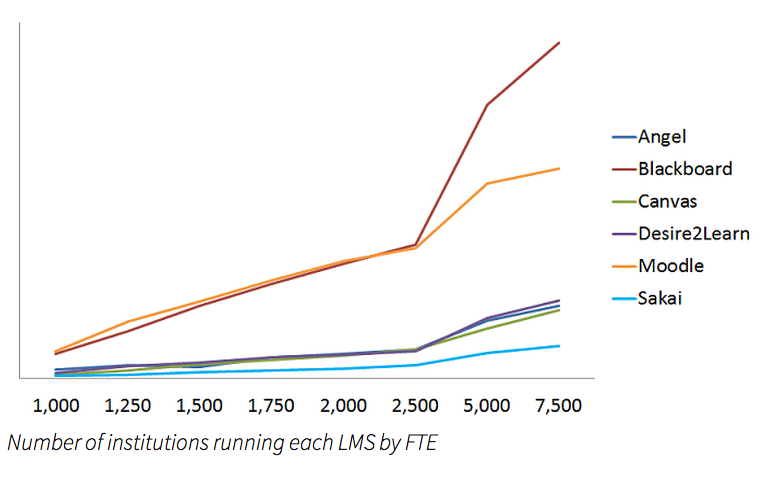Last fall I mentioned two new non-survey data sources available to track LMS adoption within higher ed. While surveys for subjective, attitudinal information still make sense, surveys of hard data are losing their value over time. Analyses of automatically collected system data place less of a burden on the organizations providing the information, and these analyses also allow a more agile approach to refining the data collection and viewing from different angles. Today Edutechnica released a new report on LMS adoption that demonstrates these benefits.
When we provided our initial analysis of LMS usage in fall of 2013, one point of feedback that we heard loud and clear is that because our data only included institutions with greater than 2000 enrollments, we excluded a fair number of community colleges, career colleges, and liberal arts colleges. To the credit of those who provided this feedback, they were absolutely correct. Three-quarters of all recognized higher education institutions in the United States have fewer than 2500 FTE – a critical demographic as the majority of universities in the US are of this size or smaller. To more fairly represent LMS usage we needed to include data on smaller schools.
We are now excited to be able to provide analysis of a data set for institutions with greater than 1000 students.
The team presents the raw data for schools above 1,000 FTE, calling out some of the differences from their earlier report. But one key view they provided is looking at institutional LMS adoption per school enrollment size.
Seeing Moodle’s increased usage prompted us to investigate Moodle further. An interesting thing happens below 2500 FTE; Moodle actually exceeds Blackboard’s market share. Only after this point do the demographic segments diverge.
source: Edutechnica
While this data confirms a commonly-held assumption about Moodle’s popularity at small schools, it is quite valuable to have data available on a per-enrollment basis. Kudos to George Kroner and team for further developing their data set in response to reader feedback.
There’s more information at the post that’s worth exploring.
